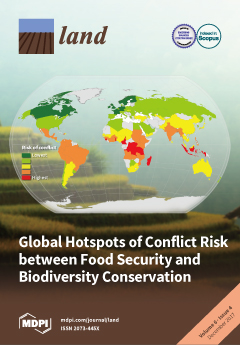Resources
Displaying 1936 - 1940 of 2258Compensation for Expropriated Community Farmland in Nigeria:
In Nigeria, the recurring impoverishment and other negative socioeconomic impacts endured by landholders affected by expropriation are well-documented and call into question the Land Use Act’s (LUA) effectiveness in protecting local land rights. The World Bank’s Land Governance Assessment Framework found that, in Nigeria, “a large number of acquisitions occurs without prompt and adequate compensation, thus leaving those losing land worse off, with no mechanism for independent appeal even though the land is often not utilized for a public purpose”.
The Community Land Act in Kenya
Kenya is the most recent African state to acknowledge customary tenure as producing lawful property rights, not merely rights of occupation and use on government or public lands. This paper researches this new legal environment. This promises land security for 6 to 10 million Kenyans, most of who are members of pastoral or other poorer rural communities. Analysis is prefaced with substantial background on legal trends continentally, but the focus is on Kenya’s Community Land Act, 2016, as the framework through which customary holdings are to be identified and registered.
Constraining the Deforestation History of Europe: Evaluation of Historical Land Use Scenarios with Pollen-Based Land Cover Reconstructions
Anthropogenic land cover change (ALCC) is the most important transformation of the Earth system that occurred in the preindustrial Holocene, with implications for carbon, water and sediment cycles, biodiversity and the provision of ecosystem services and regional and global climate. For example, anthropogenic deforestation in preindustrial Eurasia may have led to feedbacks to the climate system: both biogeophysical, regionally amplifying winter cold and summer warm temperatures, and biogeochemical, stabilizing atmospheric CO 2 concentrations and thus influencing global climate.
Pastoralism and Land Tenure Transformation in Sub-Saharan Africa: Conflicting Policies and Priorities in Ngamiland, Botswana
In dryland Africa, access to land and water resources are central to pastoral livelihood activities. Policy intervention in these regions represents the outcome of concerted post-independence processes in which countries have committed to land tenure transformation as a policy objective. This was meant to create private, liberal property rights to replace communal customary tenure systems which were considered to be a constraint to development. Despite these efforts, decades of scientific research indicate that countries are still struggling to meet environmental sustainability objectives.
Identifying Hot Spots of Critical Forage Supply in Dryland Nomadic Pastoralist Areas: A Case Study for the Afar Region, Ethiopia
This study develops a methodology to identify hot spots of critical forage supply in nomadic pastoralist areas, using the Afar Region, Ethiopia, as a special case. It addresses two main problems. First, it makes a spatially explicit assessment of fodder supply and demand extracted from a data poor environment. Fodder supply is assessed by combining rainfall-based production functions and rule-based assessment for prevailing land use. Fodder demand is based on a data consistency check of livestock statistics concerning herd size, composition and geographical distribution.



